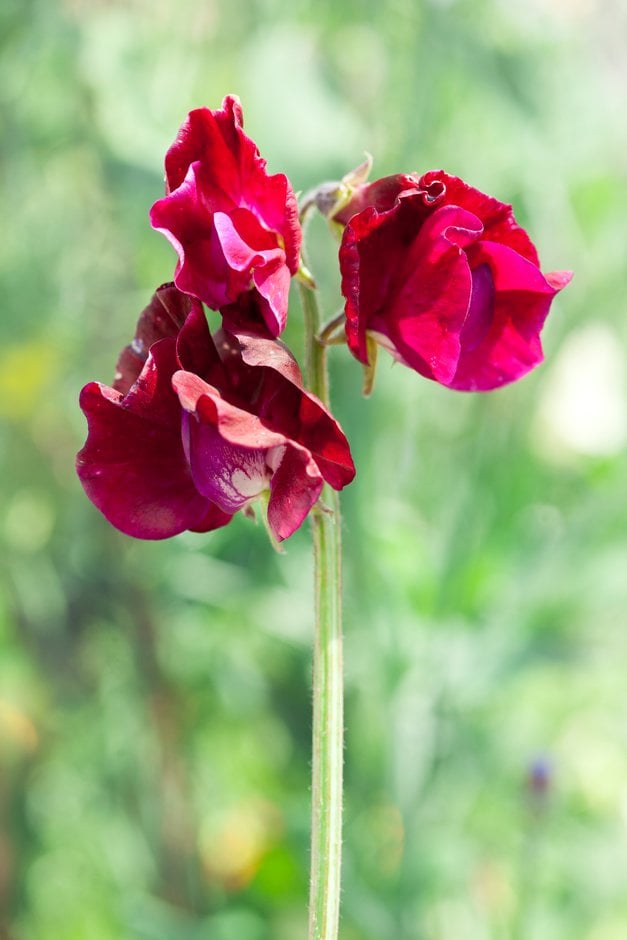Size
Ultimate height
1.5–2.5 metresTime to ultimate height
1 yearUltimate spread
0.1–0.5 metresGrowing conditions
Moisture
Moist but well–drainedpH
Acid, Alkaline, NeutralColour & scent
| Stem | Flower | Foliage | Fruit | |
| Spring | Green | |||
|---|---|---|---|---|
| Summer | Red | Green | ||
| Autumn | Red | Green | ||
| Winter |
Position
- Full sun
Aspect
South–facing or West–facing or East–facing
Exposure
Sheltered Hardiness
H3Botanical details
- Family
- Fabaceae
- Native to GB / Ireland
- No
- Foliage
- Deciduous
- Habit
- Climbing
- Potentially harmful
- Pods and seeds are not edible. Wear gloves and other protective equipment when handling. Pets: Pods and seeds are not edible. For further information and contact numbers regarding pets, see the HTA guide to potentially harmful plants
- Genus
Lathyrus can be annuals or herbaceous or evergreen perennials, mostly climbing, with pinnate leaves ending in a tendril, and showy pea-like flowers, fragrant in some species
- Name status
Unresolved
How to grow
Cultivation
Plant out seedlings 20-30cm apart after the final spring frost in well-drained but moisture-retentive humus-rich soil in full sun or very light dappled shade, and provide support. See sweetpea cultivation
Propagation
Propagate by seed: in milder areas sow during autumn, and overwinter the young plants in a cold frame or unheated glasshouse, or in colder areas sow in late March or April; plant out after the final spring frost. See sowing seeds indoors for further advice
Suggested planting locations and garden types
- City and courtyard gardens
- Cottage and informal garden
- Wall side borders
- Cut flowers
- Flower borders and beds
Pruning
For a long and regular supply of blooms, cut flowers frequently, before they produce seed pods
Pests
Diseases
May be susceptible to powdery mildews, Fusarium wilt and sweet pea viruses
Get involved
The Royal Horticultural Society is the UK’s leading gardening charity. We aim to enrich everyone’s life through plants, and make the UK a greener and more beautiful place.
